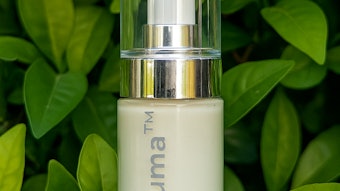
Consumers are continually searching for products that work faster and better. In addition to wanting superior performance from the products they purchase, they often expect immediate, noticeable results. This is especially true for anti-acne products, no matter the age of the user.
The bacteria responsible for outbreaks of acne are called Propionibacteria acnes, and thrive in pores that are clogged by oil, dirt and dead skin cells. Overproduction of sebum that often occurs due to hormone imbalances attracts dirt, which provides an ideal environment for bacteria to grow.
Benzoyl peroxide products for acne are among the most popular and effective treatments—and work by releasing oxygen, which prevents bacteria from growing. It also cleans out the dead skin cells, which helps to prevent pores becoming blocked and thus prevents the bacteria from multiplying. As a result, it helps to prevent new breakouts and flare ups.
However, for many consumers, there is a problem in using products with benzoyl peroxide—irritation. It is, however, a problem with delivery and not the ingredient. And Croda's Arlasolve™ DMI allows the creation of anti-acne products that effectively harness the power of benzoyl peroxide while eliminating its negative side results. In fact, Arlasolve™ DMI enhances the activity of benzoyl peroxide in several ways. It helps to dissolve benzoyl peroxide in formulations, making sure that it is active, while reducing the skin irritation potential in both rinse off and leave on products.
Desired Effect
Most consumers know that benzoyl peroxide is an effective treatment for acne. What they don’t always know is that it is only as effective as the mechanism used to deliver it. It must, in short, be effectively delivered to where it’s needed, and only then will consumers see the desired results. Many anti-acne products on the market are ineffective because the active is not adequately delivered to the skin. No matter the concentrations, if the active particles have collected into large masses rather than remaining isolated in solution, the product will not be as effective and the consumer will be disappointed. And a disappointed consumer results in lost ongoing sales and brand confidence.
An active—in this case, benzoyl peroxide—must be properly dissolved to better penetrate the skin and come into contact with the structure or element that it affects. In the instance of benzoyl peroxide, the product must be delivered to the pores of the skin in order to kill the p. acnes bacteria that cause acne.
Benzoyl peroxide is usually supplied in a crystalline form, and the large particle size will not be able to penetrate the stratum corneum so remains on skin surface—i.e. not delivered. The large size also is very irritating to the skin, particularly with leave-on anti-acne treatment systems where the skin is in contact with the product for an extended period of time. Manufacturers of benzoyl peroxide have sought to offer products with reduced particle size, with the goal of reducing irritation and increasing delivery. This offers an improvement, but is not the final answer.
The solution is to effectively dissolve the benzoyl peroxide. Reducing the crystalline particle size of benzoyl peroxide can reduce irritation, but smaller benzoyl peroxide does not necessarily mean delivered benzoyl peroxide. Arlasolve™ DMI reduces benzoyl peroxide to molecular size and aids penetration into the epidermis where the active will be effective. Once deposited on the skin surface, Arlasolve™ DMI increases the polarity of the surface skin layers and carries the active benzoyl peroxide through—without promoting penetration into the bloodstream.
For rinse-off cleansers, a shortened contact time means efficiency of benzoyl peroxide delivery is also essential. In a rinse-off system, benzoyl peroxide not delivered contributes to irritation when rubbed onto the skin, and it is carried away upon rinsing, rendering it ineffective. Arlasolve™ DMI ensures benzoyl peroxide has maximum contact time with the pore and the acne-causing bacteria. The effectiveness was recently investigated in a kill rate study published in the Journal of Drugs in Dermatology. The 4% benzoyl peroxide product in a creamy wash containing Arlasolve™ DMI showed superior antibacterial activity against P. acnes versus multiple other systems containing benzoyl peroxide at higher percentages, even up to 8.5%.
In addition to increasing the efficacy of actives in formulations, by keeping active particles smaller, Arlasolve™ DMI helps to keep the particles from collecting into larger masses (re-agglomeration) that scratch and damage the skin.
Summary
Arlasolve™ DMI enhances the activity of benzoyl peroxide, ensuring that it is active, and also reduces the skin irritation potential. It gives brand owners the ability to increase the effectiveness of actives in their lotions and facial cleansers—and to share this study-backed claim with consumers. This is especially useful in applications that use benzoyl peroxide for anti-acne benefits.
Arlasolve™ DMI is applicable to a range of products, including the two most common approaches to acne care: rinse-off cleansers and leave-on spot treatments. Arlasolve™ DMI is also compatible with a wide range of ingredients, and—with its non-greasy, dry skin feel—is appropriate for facial cleansers, spot treatments, and skin lotions and creams.
Disclaimer:
The above paid-for content was produced by and posted on behalf of the Sponsor. Content provided is generated solely by the Sponsor or its affiliates, and it is the Sponsor’s responsibility for the accuracy, completeness and validity of all information included. Global Cosmetic Industry takes steps to ensure that you will not confuse sponsored content with content produced by Global Cosmetic Industry and governed by its editorial policy.










